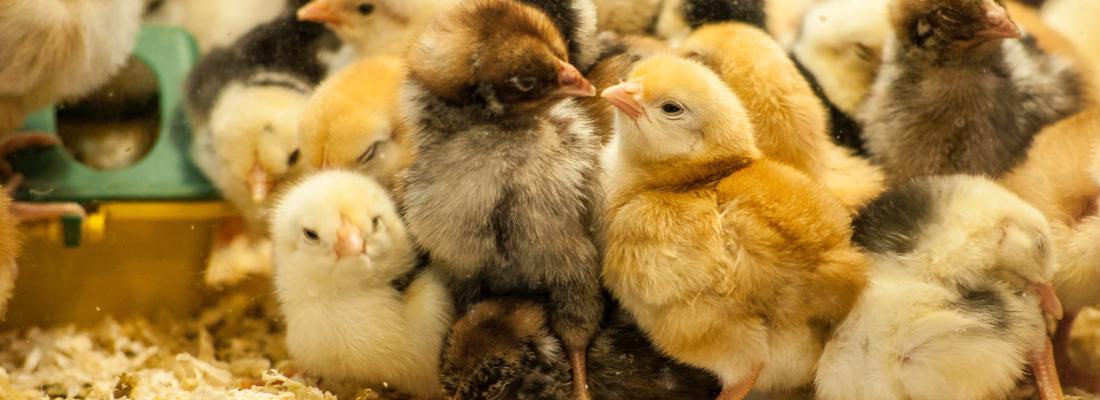Agroecology Reading time 6 min
On-farm hatching and contact with adult hens: benefits and risks of two innovative practices in poultry farming
Published on 26 February 2025

To improve the early perinatal conditions of broiler chicks, alternative hatching systems have been developed. On-farm hatching (OFH) with an enriched microbial and stimulating environment by the presence of an adult hen is a promising solution.
Day-old chicks were allotted within five hatching and rearing conditions: OFH, conventional hatchery (CH), CH and post-hatching treatment with antibiotics (CH + AB), as well as both hatching systems with an adult hen at hatching (OFH + H, CH + H). To challenge the robustness of chickens, they were exposed on D27 to suboptimal rearing conditions by combining for 4 h transport in boxes in a new room at a lower temperature and fasting. On their return to the original room, the chicken density was increased, and birds were orally vaccinated with the Gumboro vaccine. The impacts of these conditions on hatchability, chick quality score, performance, health and robustness were determined.
The OFH chick body weights (BWs) were significantly greater than those of CH chicks at hatching. Whereas there was no effect of hatching conditions, the presence of hens decreased the hatchability rate, the quality score of OFH chicks and increased mortality at hatching. Treatment of CH chicks with antibiotics (CH + AB) temporarily decreased chicken BW at D19, but the feed conversion ratio (FCR) was not modified. At D19, OFH chicks had the highest BW compared to the other groups, and the presence of hens at hatching harmed chicken BW regardless of the hatching condition and FCR. An interaction between the effect of experimental rearing conditions and chicken sex was observed later for BW. In males, the OFH chickens were the heaviest compared to the other groups at D34 but not at D56. The presence of hens negatively impacted CH chicken BW at D56. In females, there was no effect of hatching condition on the BWs at D34 and D56, and the presence of hens had a positive impact on OFH chicken BW. There was no effect of hatching conditions on health parameters.
In conclusion, the OFH system was a hatching system at least equivalent to the CH system. The presence of the hen at hatching and during the chick start-up phase on performance interacted with the hatching condition and the sex of the chickens.
References: Guilloteau, L.A.; Bertin, A.; Crochet, S.; Bagnard, C.; Hondelatte, A.; Ravon, L.; Schouler, C.; Germain, K.; Collin, A., 2024. On-farm hatching and contact with adult hen post hatch induce sex-dependent effects on performance, health and robustness in broiler chickens. Peer Community Journal, 4: 17 http://dx.doi.org/10.24072/pcjournal.382
